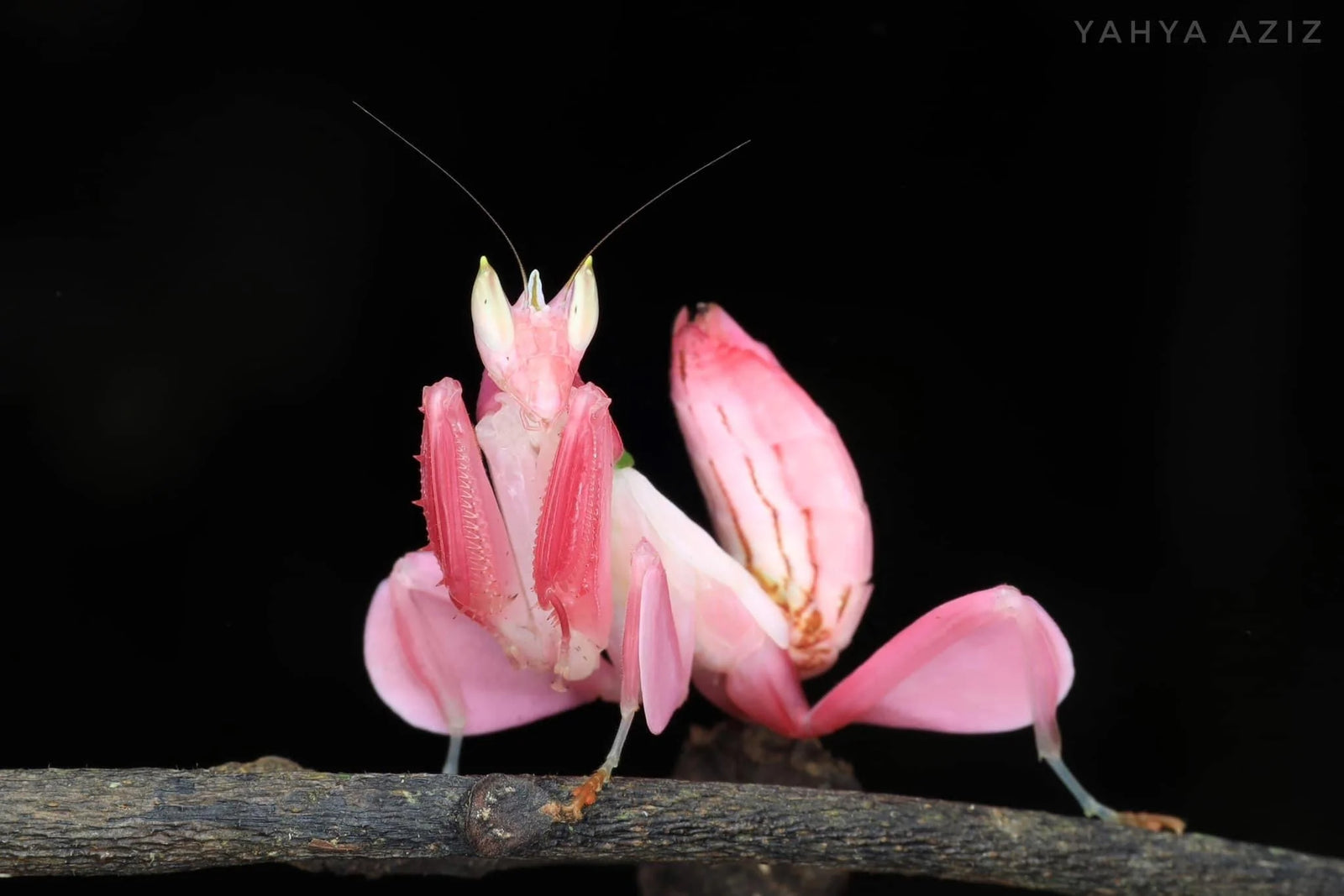Menú
-
- Hogar
- Contacto
- Buscar
-
Comercio
- Insectos vivos que se alimentan
-
Suministros
- Hábitats
- Comederos
- Comederos y suministros para la cría de microfauna
- Kits bioactivos
- Suministros bioactivos
- Contenedores
- Tazas de cultivo de insectos
- Tazas y tapas para cultivo de insectos
- Proyectos de aula
- Plantas de aire vivas bioactivas
- Sustratos
- Iluminación y Calefacción
- Jaulas, hábitats, cajas de insectos, viveros, insectarios
- Ladrar
- Suministros de envío, paquetes térmicos, paquetes fríos, contenedores.
- Bioactivo
- Plantas
- Galería Mantis
- Evaluaciones de Usmantis
- Mantis religiosa
- Mantis
- Ooteca de huevos de mantis religiosa para el control de plagas
- Suministros bioactivos
- Beneficial Insects
- Vídeos de ayuda
- Las 5 mejores mantis religiosas como mascotas,
- Blog
-
Comprar por familia
- Mantis religiosa
- Hojas de cuidado
- Orden de pista
- Live Feeder Insects
- Wholesale prices for bulk orders
- FAQ
- Galleries of Mantis Videos
-
- Hogar
- Buscar
- Sobre nosotros
- Envío
- Refund Policy
- Seguimiento de pedidos
- Contáctenos
- Blog
- Beneficial Insects
- Mapa del sitio
- Reseñas
-
Recursos de producción cinematográfica.
- Wholesale
- FAQ
- Entrar
-
Español

Mantis fly Mantispidae, very special insect
octubre 15, 2024 3 lectura mínima
Mantis fly Mantispidae, known commonly as mantidflies, mantispids, mantid lacewings, mantisflies or mantis-flies, is a family of small to moderate-sized insects in the order Neuroptera.
Scientific Name
About 11 species in North America north of Mexico
Family
Mantispidae (mantidflies) in the order Neuroptera (antlions, lacewings, and relatives)
Description
Mantidflies, also called mantis flies or mantispids, look like a cross between a lacewing insect and a praying mantis. They are small, delicate creatures with intricately veined wings, but the front half looks like a small mantid, complete with raptorial forelegs.

Mantidflies are not hard to identify, if you know what lacewing insects and praying mantises look like — just imagine the two insects stuck together, and about an inch long. But to sharpen your ID skills, note some of these finer points of identification:
- The antennae are threadlike, toothed, or feathery, but they are never clubbed.
- The head is like that of a praying mantis: triangular, with big eyes on the top two corners and the mouth at the bottom corner.
- The prothorax (front portion of the thorax, which is the midpart of the body between head and abdomen), is elongated; some say it looks like the neck of a giraffe.
- The front pair of legs are like those of a praying mantis: they are modified for grabbing hold of prey, with a big claw at the tip that closes against the wide, spiny tibial segment.
- The front pair of legs are attached to the body at the front end of the prothorax, appearing just behind the head. The front legs are not used for walking; they are held up.
- The middle and hind pairs of legs are attached farther back on the body, and these are the only ones used for walking.
- The 2 forewings and 2 hindwings are all very alike and are similar to those of lacewings; both are in the “nerve-winged insects” order, with an intricate netlike pattern of veins on the wings.
Mantidflies vary in color. Most are either green or brownish, tan, grayish, or yellowish. Some common species include:

- The green mantidfly (Zeugomantispa minuta) is pale lime green, about the same color as a green lacewing. Their large eyes can be ornately patterned with a rainbow of iridescent colors. Their larvae are parasitoids in the egg sacks of spiders; adults capture and eat small insects. Missourians start seeing this species starting in late

- Say’s mantidfly (Dicromantispa sayi, syn. Mantispa sayi), the four-spotted, spot-tipped, or interrupted mantidfly (D. interrupta), and a species whose name translates to “beautiful slender mantidfly” (Leptomantispa pulchella) are all rather nondescript tan, brownish, or yellowish and are widespread in the eastern United States.
Similar species: It’s easy to see the similarity with green lacewings and other lacewings (there are a number of lacewing families, including Chrysopidae), and with the various species of mantises. Mantidflies are much more closely related to lacewings than they are to true praying mantids. Here are some other insects that are similar:
- Dustywings (family Coniopterygidae) are tiny, no bigger than 3 mm (about ⅛ inch) in length. They look something like miniature lacewings covered with dust. They have long, threadlike antennae. If you’re familiar with whiteflies, they look something like those. As larvae, they’re predators of aphids, mites, scale insects, and other small creatures.
- Snakeflies (now with their own order, Raphidioptera, but formerly in the Neuroptera) are not found in Missouri, but if you travel to western states, keep an eye out for these nifty, harmless animals. They resemble mantidflies but don’t have the raptorial forelegs. Their long, necklike prothorax and long, wide head, usually held up and bobbing around like a cobra’s, makes them look really weird. The females, with their freakishly long, flexible ovipositor, look downright scary. Again, they're completely harmless, except to the insects they eat.
- Other insects that used to be in order Neuroptera that are now split into different groups are the alderflies, dobsonflies and fishflies, owlflies, and antlions.
Other Common Names
Mantid Lacewings
Mantispids
Size
Adult length: ¾–1¼ inches.
Dejar un comentario
Los comentarios se aprobarán antes de mostrarse.
Ver artículo completo

orchid mantis evolutionary research
junio 06, 2025 2 lectura mínima
The orchid mantis (Hymenopus coronatus) transitions from black-and-red to pink-white coloration during development, a shift driven by the Redboy pigment transporter. This transition serves different ecological functions: red coloration helps hatchlings mimic stink bugs for predator avoidance, while the pink-white coloration of older nymphs provides floral camouflage for both predator avoidance and prey attraction. The Redboy transporter, upregulated by ecdysone, facilitates this shift by exporting red pigments in early stages and importing white pigments in later stages.
Evolutionary Basis:
Redboy's Role:
The Redboy transporter, a novel ABCG transporter, arose by gene family expansion and positive selection, specifically to handle the transition from red to white coloration, according to research on Nature.
Hormonal Regulation:
The hormone ecdysone regulates Redboy, ensuring the pigment transition happens at the appropriate developmental stage, according to research on ResearchGate.
Genetic Adaptation:
The evolutionary changes in Redboy have allowed orchid mantises to adapt their body color to different life stages and ecological niches.
Ecological Functions:
Aposematic Mimicry (Hatchlings):
The initial black-and-red coloration serves as a warning signal, mimicking the appearance of stink bugs, which are known to be distasteful or toxic to predators.
Camouflage (Older Nymphs):
The pink-white coloration provides floral camouflage, helping the mantis blend in with flowers and avoid detection by predators.
Prey Attraction:
The flower-like appearance also attracts unsuspecting prey, such as small insects, to their location, enhancing the mantis's hunting success.
In summary, the orchid mantis's body color transition is a fascinating example of ontogenetic camouflage and adaptive evolution, where the color changes throughout the mantis's life serve distinct ecological roles in where the color changes throughout the mantis's life serve distinct ecological roles in predator avoidance and prey attraction.
Ver artículo completo

Do insects have feelings? Love or Hate? What’s your opinion
septiembre 09, 2024 3 lectura mínima
La literatura entomológica ha sugerido históricamente que los insectos no pueden sentir dolor, lo que ha llevado a su exclusión de los debates éticos y de la legislación sobre bienestar animal .
Ver artículo completo
Artículos recientes
-
orchid mantis evolutionary research
junio 06, 2025
-
New Yorker article 1955 Mantis Man
marzo 09, 2025
-
Mantis fly Mantispidae, very special insect
octubre 15, 2024
-
Do insects have feelings? Love or Hate? What’s your opinion
septiembre 09, 2024
-
How Praying Mantises Hear: One ear
julio 19, 2024
-
Identifying Domestic species
julio 19, 2024
-
Invasive claims and irresponsible advice
abril 13, 2024
-
Is it time for insect researchers to consider their subjects’ welfare?
abril 08, 2024
-
My Awesome Summer by P. Mantis Children’s book
abril 07, 2024
-
Toxodera
abril 06, 2024
Categorías
- animal husbandry
- best feeders
- best mantis for pest control
- breeding praying mantis
- buy praying mantis
- Cannabis
- crickets
- discussion
- dormitory pet
- Drosophila
- education
- egg
- entomology
- fertility
- flightless fruit flies
- Flower mantis
- Friendly Bugs For Cannabis
- fruit fly culture
- geometric morphometrics
- Ghost mantis
- happy experience with pets
- Hydei
- Hymenopodidae
- Hymenopus coronatus
- invasive
- keeping insects alive
- Lucky mantis
- Major League baseball Perez Kisses Lucky Mantis!
- make money
- mantis for dummies
- mantis ooth
- Mantodea
- melanogaster
- mimicry
- mismolt
- new species
- ooth
- ooth care
- ootheca
- P paradoxa
- pest
- Pest control
- pet nutrition
- praying mantis
- praying mantis care
- praying mantis for sale
- reptile feeders
- School project
- scientific research
- Sexing praying mantis
- Shipping
- signalling
- stem
- stenophylla
- Store news
- stress from shipping
- usmantis
- we buy mantis
Menu Title
Esta secção não inclui de momento qualquer conteúdo. Adicione conteúdo a esta secção através da barra lateral.
Subscribe
Sign up to get the latest on sales, new releases and more …
Invalid Password
Enter